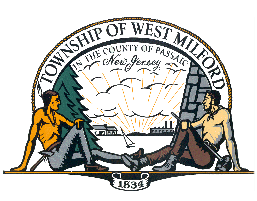Seasonal Safety Tips
Winter Driving Tips
Why is driving during the winter different from any other time of the year? Your car is different. It doesn't start the same, doesn't steer the same, and sure doesn't stop the same. The roads are different. They become treacherous when covered with snow or ice, or a combination of the two, and might be closed. Visibility is different. Windshields become ice-covered or foggy, the glare from snow can be blinding, and there are fewer hours of daylight driving time. Drivers are different. When there's a change in the weather, they become tense and anxious, worrying about road conditions and hurrying in anticipation of a possible delay, and they don't pay attention to the drivers around them.
If you must travel during adverse weather be sure to inform family and friends of your destination, anticipated routing, and expected time of arrival. Be prepared to turn back or seek refuge if conditions become threatening. When you reach your destination, make a phone call to inform them of your arrival.
A car telephone with a backup power source (other than the car battery) might be the single most important safety item available. A citizen's band radio is a good alternative. When you're on the road ALWAYS wear your safety belt, and put small children in approved safety seats in the back seat. Roadway conditions may vary depending on the sun, shade, or roadway surface. Watch for slick spots under bridges, on overpasses, and in shaded areas. Drive slower and increase your following distance. Your speed should be adjusted for the conditions and match the flow of traffic.
When driving during or shortly after a storm be sure to be aware of snowplows. Slow down and Give 'em a BRAKE. Today's snowplows are big, heavy pieces of equipment and are generally moving slower than traffic. Snowplows average about 30 MPH when plowing snow. Play it safe and give them plenty of room.
If a snowplow is coming toward you, slow down and give it room to pass because the plow blade may be over the center line of the highway. When you approach a snowplow from the rear remember it is moving slower than you, so reduce your speed and approach with caution. The snowplows are also spreading salt on the highway and the salt being dispersed could chip your car, so don't drive close behind the plows.
Don't pass a snowplow unless you can clearly see the road ahead. Blowing snow from the snowplow or the wind could hide a car approaching from the other direction; or on a four-lane highway the passing lane could be blocked with a snowdrift. Caution is the byword. Most snowplow accidents happen when vehicles run into the back of the snowplow trucks.
Because winter is so rough on vehicles and equipment you should regularly check the wipers, tires, lights, and fluid levels (radiator, windshield washer, power steering, oil, and brakes). If you suspect trouble, check it out. It's better to be safe than sorry.
Your vehicle should be equipped with a winter emergency survival kit. Recommended items are: ice scraper/snow brush, jumper cables, basic tool kit, shovel, traction mats or old rugs or sand, blankets and extra clothing, candles, waterproof matches and an empty coffee can to melt snow for drinking water, flashlight with extra batteries, and a basic first aid kit.
- Always buckle-up. Your seat belt can be the best protection against drivers who are tense and in a hurry because of weather conditions.
- Carry a cellular phone for use during emergencies and for notifying those expecting your arrival in case there are weather delays.
- When the weather calls for heavy snow or sub-zero temperatures, do not go out unless absolutely necessary. If you do have to make the trip, ensure someone is aware of your route of travel.
- Make sure your car is winterized, and always keep the tank topped off. When the tank gets to half a tank, fill it up.
- Dress for the weather, not your destination. Business attire may be appropriate for the office, but not best suited for unexpected winter weather emergencies.






 Online Tax Payments
Online Tax Payments
 Community Services & Recreation
Community Services & Recreation
 Public Safety
Public Safety
 Emergency Information
Emergency Information
 Meetings & Minutes
Meetings & Minutes
 Forms & Documents
Forms & Documents
 Service Request
Service Request
 FAQs
FAQs
 Links
Links
 Contact Us
Contact Us




